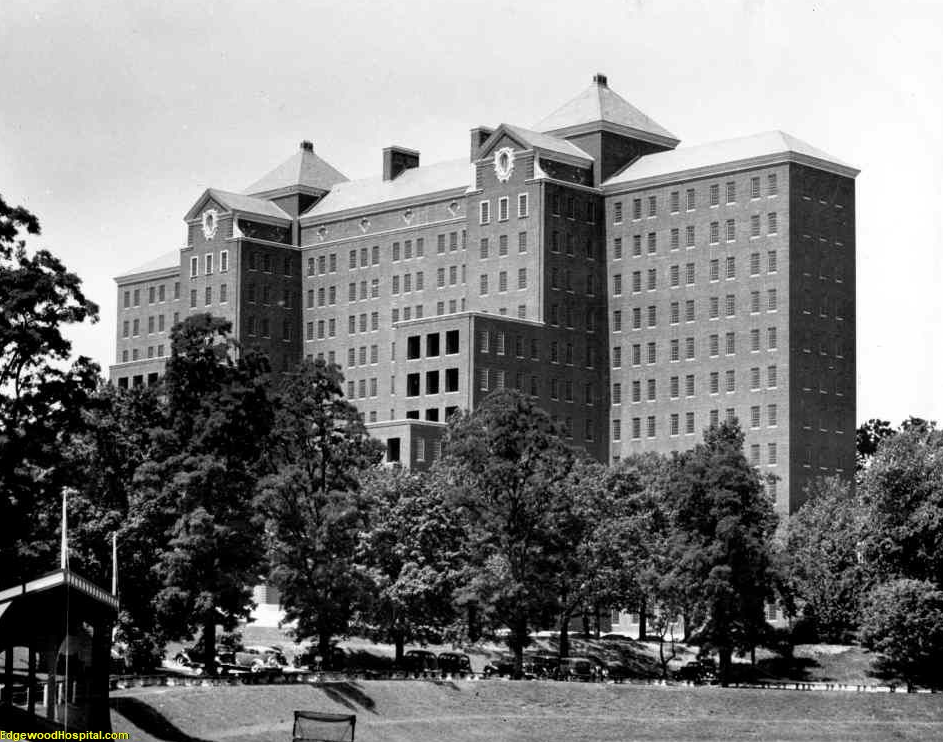Kings Park Psychiatric Center Building 93
A colored version of this post can be viewed here.
When the thought of abandoned or, dare I say, haunted psychiatric centers comes to mind, most think of the former Kings Park Psychiatric Center (KPPC). Even those who do not consider themselves all that adventurous can be seen on the grounds, along with the elderly and young. It is not uncommon to run into another person while exploring the 368-acre-long campus. Exploring the grounds allows you to unravel the history of this overflow facility.
On August 25, 1988, the state-run Office of Mental Health declared an overcrowding crisis within hospitals and psychiatric centers alike. Patients are laid on beds that are hardly even inches from one another; to them, it is degrading and to the staff a logistical nightmare. Due to the overwhelming number of patients being received, many are carted off to other state-run facilities for treatment.
Many would see the monolithic 159-foot structure known as building No. 93 as they underwent the process of institutionalization; afterwards, they sought residence on the active floors. Despite having 13 floors, only a third of them were in use; the remaining 2/3 have been closed off since the 1970s. In 1996, the entirety of the building along with many others on the grounds closed. Some buildings still operated afterwards; building No. 7 received electricity until 2001, and building No. 1 served as an administrative office until 2012.
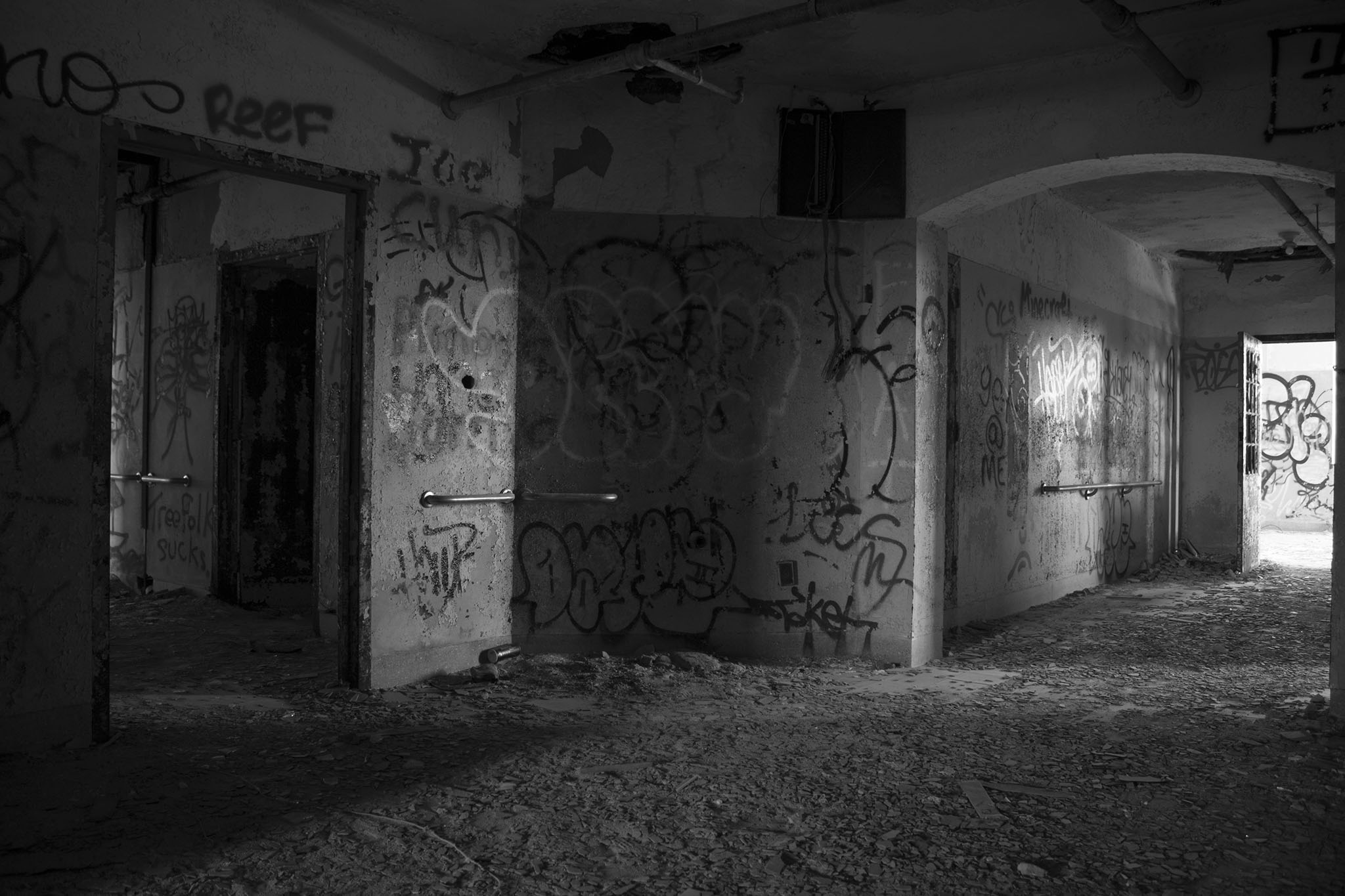
Post-abandonment, the campus became the subject of heated controversy over its future. The Kings Park question is a dividing one: what should be done with such a sprawling derelict facility?
Historians advocate for the preservation of the buildings that have yet to be razed, based mainly on the historical significance that many buildings hold. Many were constructed during the turn of the 20th century, and yet this among many other facts is ignored by the Office of Parks, Recreation, and Historic Preservation. They had revitalized the waterfront with their Local Waterfront Revitalization Program, yet they demolished 16 buildings and structures. Glancing over the whole "protect, restore, and rehabilitate locally significant historic sites in the Sunken Meadow State Park and the Kings Park Psychiatric Center."
Others view the buildings as a blight on the Kings Park community, polluting the park that it occupies. Razing them opened a new chapter in the town's history. In 2005, the property had a pending sale to the Arker Companies of Woodmere, with a potential plan for residential condominiums. At one point, reusing the former patient housing (No. 93, the quads) was also considered. This plan had only just remained that—a plan. Officials and residents of the hamlet saw no need for condominiums or the influx of people it could bring. If they went through with it, it could have been developed into a community center, one in which electroshock therapy and lobotomies are relics of a time long ago.
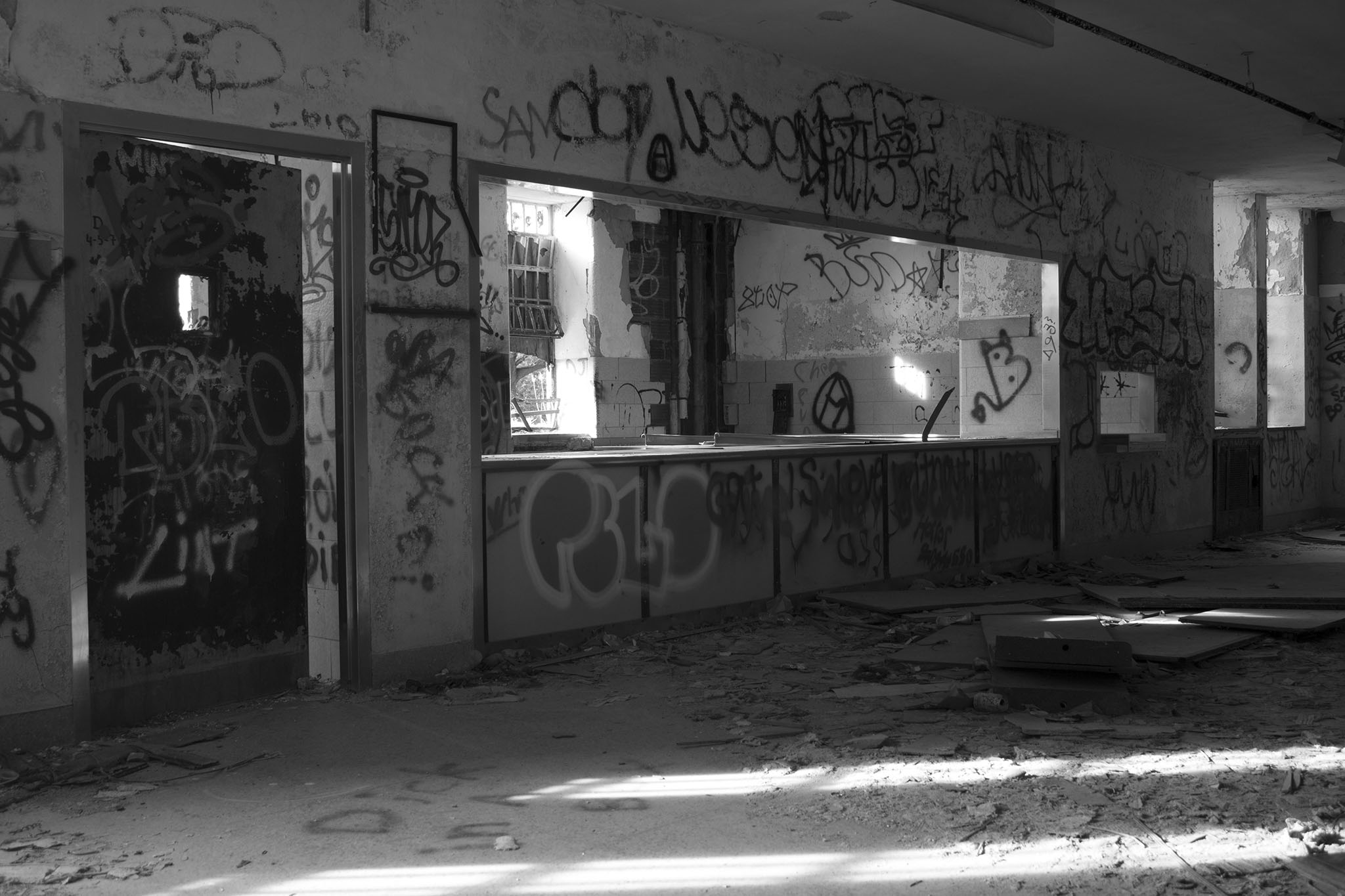
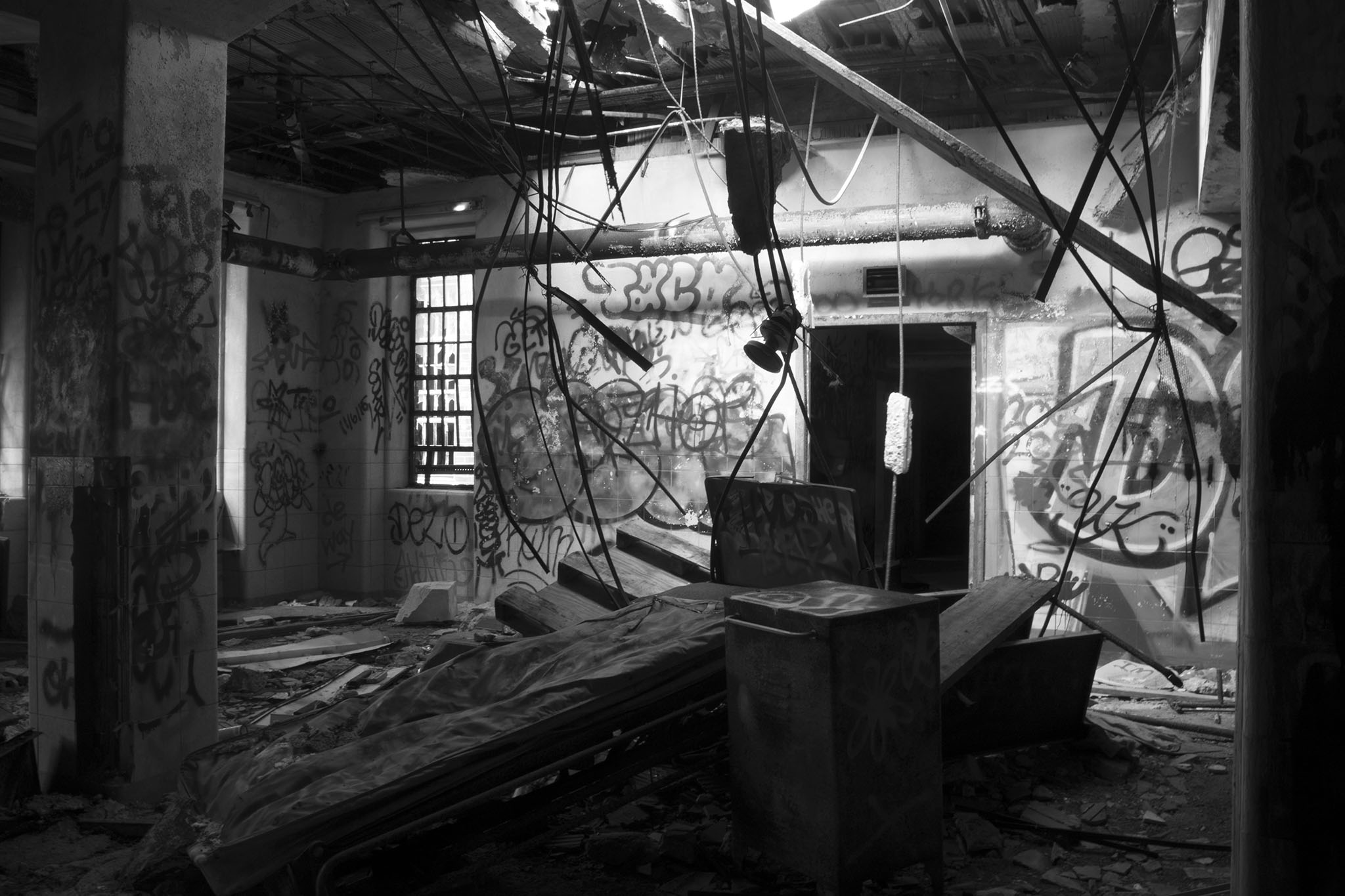
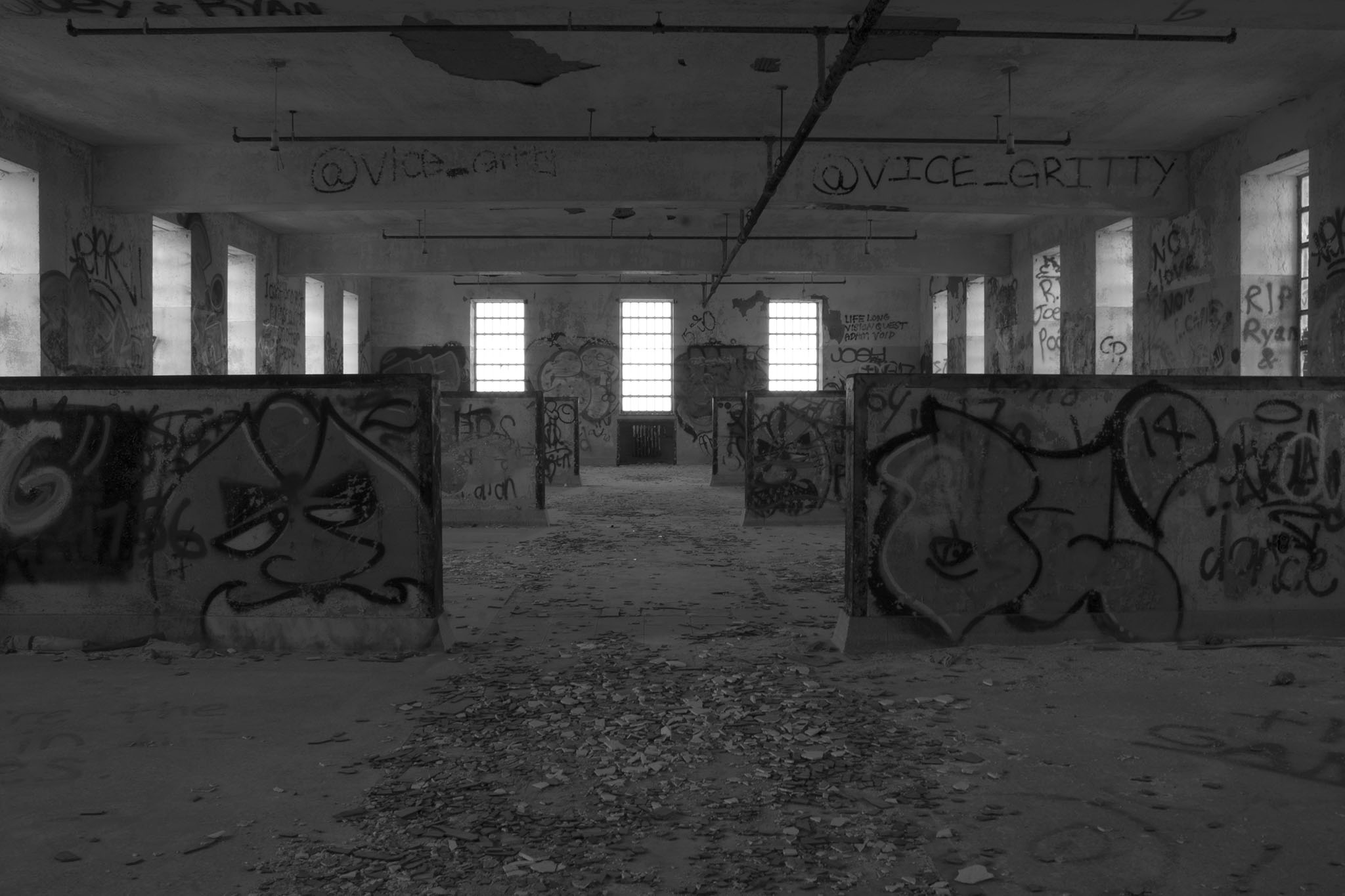
.jpg)
Many of the buildings have already been lost to vandals rather than time, with this generation's graffiti covering the mustard-yellow walls of No. 93. A couple of odd years ago, some individuals took up the duty of restoring a room on the 9th floor. A fresh new coat of white paint replaced the peeling paint chips; a bed and other amenities were added. In the doorframe stood a desk, on which you could leave your signature in a guest book. This reverse vandalism guerrilla art installation known as Exhibit No. 8. Sadly enough, the sweat put into this art project was squandered by miscreants; the once-white walls smothered by ash.
All is not lost, even if it seems that the buildings are in peril of getting trashed even further. There are still artifacts and other remnants that show what life must have been like for patients and staff at this facility. Patient beds line the basement floor of building No. 93 (pictured above), and dietary-related documents are strewn about the kitchen of building No. 138. But we can only hope that it stays that way.


